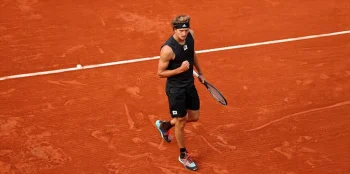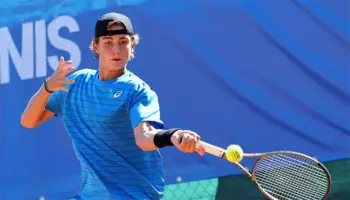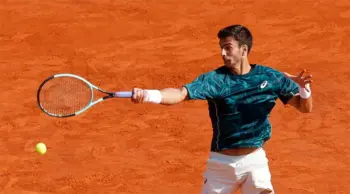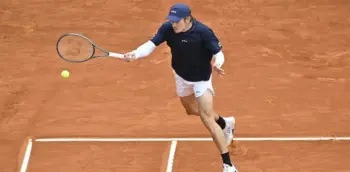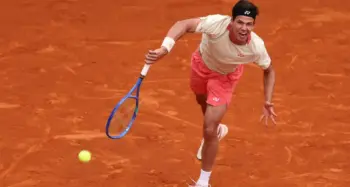Clay courts are a bit of a divider in the tennis world. We all know what Rafael Nadal thinks, but guys like Nick Kyrgios repeatedly bash the surface. If we look at it with it from the UK’s standpoint, Clay Court Services’ Peter Sutton explains how clay courts can help British tennis.
It is obvious if you look at the world rankings that clay courts play a role in producing world-class tennis players. Eighteen of the top 200 are Italian, 14 are French, 14 are Spanish and 10 are from Argentina, all countries where natural clay is the most played-on surface. For all of their money and resources, just nine are from the US, while there are five from the United Kingdom, where hard courts and synthetic grass dominate.
It is a similar story in the women’s game. Five of the top 200 are French, six are Spanish, but just three come from the UK.
That is not a coincidence, says Peter Sutton, a former club pro who is now dedicated to bringing more natural clay courts to these shores.
That, he says, is the only way the UK will produce players who are as good as Kyle Edmund – to win the 2019 French Open in the latest tennis betting – or Jo Konta, 23 and 41 in the world respectively, never mind generational talents such as Andy Murray.
How clay courts can help British tennis – Health benefits

“There is a cultural belief because that clay doesn’t suit the UK,” says Sutton, who turned his hobby into his job when he set up his own business, Clay Court Services, in 2012. “But from a coach’s point of view, it is easier to teach a youngster on a slow surface. When you learn to drive, you don’t get in a Formula 1 car, you go at 20mph.
“There are plenty of health benefits to playing on this surface. There is less stress on the knees and the back.
“I’ve spoken to top-class coaches who say it has added 10 years onto their coaching lives. When you’re on a hard court seven or eight hours a day, your body can suffer quite dramatically.
“You can slide on clay courts. Top professionals are playing such a harsh game, but they can fly into shots with the slide helping absorb the impact on joints and ligaments.
“It also teaches players so much more about patience, shot production and the mental side of the game. There are more rallies, the ball keeps coming back.”
How clay courts can help British tennis – Expert advice
The reason why clay courts are not popular in the UK is because they’re made from shale, a sedimentary rock that is difficult to sustain in bad weather and produces “a lot of bad bounces” if poorly maintained.
But Sutton is only interested in the best, which is why Clay Court Services are the sole suppliers to the UK of Terre Davis clay, the company based in Cremona, Northern Italy, that supplies clay to the Rome Masters, Monte Carlo Masters and several other tennis federations around the world.
Sutton installed the UK’s first court built from Terre Davis’ clay at his home club in Little Aston, Birmingham, before doing the same at various others around the country.
“Terre Davis hadn’t really exported to the UK – they didn’t think there was a market there,” he says. “But on a small budget we were able to develop a little bit of a makeover for some small clubs to get their clay courts to play better.”
His work got the attention of the LTA, so much so that four courts are now being built at the National Tennis Centre in Roehampton.
“It’s a good start,” he says, “but we’ll have to see, from a cultural point of view, whether they think this is the way forward.”
Sutton cites an example from the other side of world that he believes the UK is capable of emulating.
“Australia used to dominate world tennis in the ‘60s and ‘70s, but that began to drop off,” he says. “If you look at the stats, that’s because they were producing big guys who were just hitting the ball at a million miles an hour and not expecting the ball to come back.
“I spoke to an ex-pro, Terry Rocavert, who used to play on the clay circuit. He went back to the Australian federation with this Italian clay.
“They built over 40 clay courts, including seven or eight at Melbourne Park, and they’ve now got 11 players in the top 200.”
Weather in the UK means that replacing all the synthetic and hard courts with the red dirt is not practical, but Sutton has gone to great lengths to ensure that the courts that can be built are looked after as skilfully as they need to be.
“Groundsmen in the UK are basically used to sweeping the synthetic courts, hoovering or brushing them”, he says.
“With the LTA, I’m flying out the head technical director of Foro Italico (home of the Rome Masters). He’s the equivalent of the head groundsman at Wimbledon, but his expertise is clay.
“The LTA want him to train our groundsmen to help keep the courts in tip-top condition, because they are not just going to be played on by top professionals but the up-and-coming youngsters behind them.
“There has to be an expertise in making sure that the courts are in good condition.”
How clay courts can help British tennis – Loving the grind
The success of the project won’t be let down by a lack of trying from Sutton, who, at the age of 63, “is more passionate about tennis and playing on clay than ever”.
“I love to see the players play on this Italian clay court,” he says. “I love watching them play, learning and grinding. I find it exciting, I’m wondering is there going to be a good affect from this.”
“I hope top players [eventually] have these as a facility, to get it into their system, rather than have to go down to London or go out to La Manga (Spain’s Tennis Centre).
“Andy Murray went out to La Manga at 14 or 15 and learnt to play on clay. That’s where he grinded away. It would be great to have that here.”
One of Murray’s greatest achievements, beyond winning three slams and becoming world No. 1, was reaching the French Open final in 2016.
Sutton believes that, one day, a Brit might be able to go one better, writing on his website: “My dream is that one day a British player will win the French Open as a result of having the opportunity to play tennis on a UK clay court.”
That hasn’t been done since Sue Barker in 1976, but should his progress continue, Sutton’s vision may not be as unrealistic as it might currently seem.This article was originally found on Betway’s Insider.







